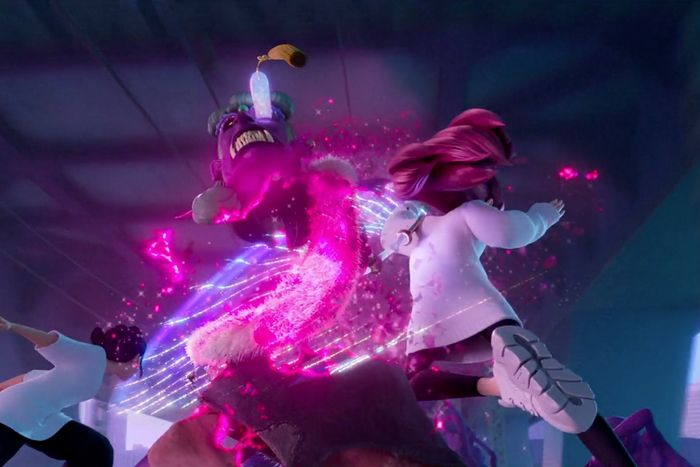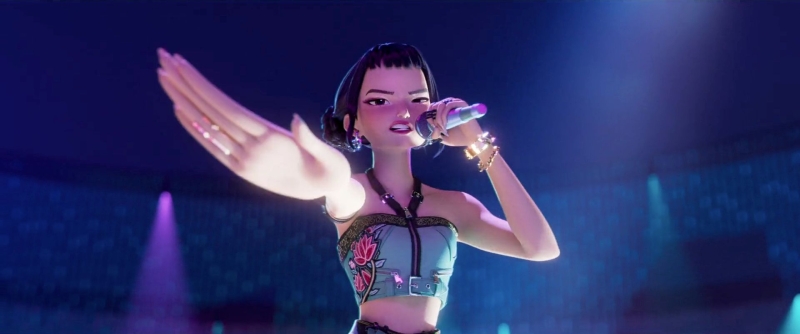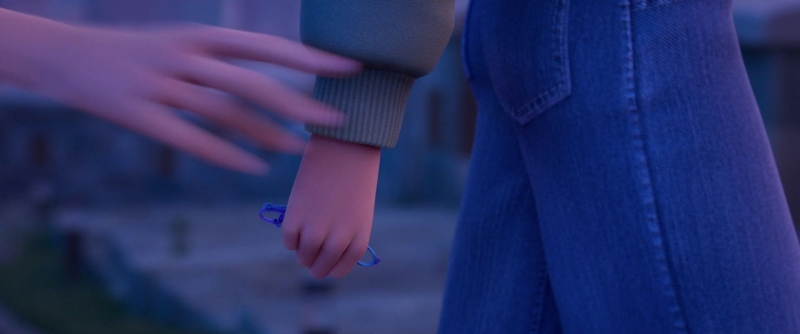The whole world is still spinning the chart-shattering slaps of KPop Demon Hunters, and so are we, but it’s worth dialing the volume down for a moment to relish in the movie’s phosphorescent artwork. Directors Maggie Kang and Chris Appelhans didn’t just deliver a crowd-pleasing confection but a rich visual feast: fight and dance choreography painstakingly timed to musical numbers, heightened visual comedy, and animation that shifts in tempo to capture fluid action and snappy banter alike. And yet, as contemporary as the film may feel, a charmingly primordial animation technique recurs over and over again: the humble “smear frame.”
In animation, smears simulate the blur of a character or object’s motion. In the fraction of an onscreen second, limbs stretch, outlines smudge, and objects double, triple, quadruple, or more. Blink and you’ll miss them, but if you’ve watched almost any traditional 2-D-animated cartoons, you’ve seen smears — when superheroes fly, the Road Runner dashes, or Bugs Bunny conducts. They’ve been around in one form or another since the earliest days of animation and typically appear in just one or two frames of a sequence. They aren’t intended to be noticed so much as felt, to create subconscious links in your mind between a character or object’s poses so that your brain doesn’t question their movement. And they’re a critical choice for the animator. They must be placed selectively and precisely or risk muddying the rest of a sequence. In recent years, the 2-D technique has become part of the visual language of 3-D animation, working its way into video games and stylized animated features alike, from Hotel Transylvania to Spider-Man: Into the Spider-Verse and beyond.



KPop Demon Hunters is full of them, and it uses several of the most common types of smears, sometimes all in the same scene. In one early scene, Mira repeatedly punches a demon she has pinned on the floor. Depending on when you freeze-frame the shot, she might have six arms or more (duplicate smears). The arms might float around her face and torso in stretched or exaggerated proportions (stretched smears). Or they might be flanked by fleshy, jagged action lines (blurred smears). Her character design alone cannot keep up with the velocity of her fists: For a fraction of a second, they must smear.
Click here to preview your posts with PRO themes ››
In the dance scenes, the hands and limbs of Mira and the other demon-hunting protagonists of K-pop trio Huntr/x stretch, their fingers gracefully elongated as their choreography demands. In one of their rehearsal scenes, Zoey frustratedly throws her lyric book and the book does a “wipe” smear, stretching into an arc offscreen as her body completes the full motion. In fight scenes, Huntr/x’s magic weapons trail light when the girls swing them. That trailing effect isn’t a smear on its own, but their blades also leave afterimages, duplicate smears, along their path through space. Those duplicates create an ambiguity: Is this a purely stylistic choice or is there a narrative reason their magic echoes through the air? They don’t exist solely to knit frames together. Like the movie’s flashy designs, exaggerated facial expressions (Tex Avery had nothing on popcorn eyes), and background jokes, the smears demand our attention.
Smears aren’t confined to the fast-paced or combat-heavy scenes, either. In the tender scene halfway into the film between Rumi and Jinu, the two meet a bracelet seller who calls them boyfriend and girlfriend. Rumi’s eyes quickly double in her embarrassment at the suggestion, smearing up and down before she collects herself. Their frantic exchange that follows is full of subtle smears as Jinu snaps his head awkwardly and Rumi gestures emphatically with her arms. And when Rumi turns away and Jinu rushes to stop her, his smudgy, distorted hand smears its way toward hers.
Now, all these stretched and duplicated elements would feel empty without KPop Demon Hunters’s buoyant story and music, but they do feel central to the movie’s energy, rhythm, and ultimate success. Some animators minimize smears a bit and, reasonably enough, discourage viewers from freeze-framing too much on them, let alone slowing down your Netflix player down to half-speed to better catch them in the act. The argument goes that the delight of a cartoon isn’t the peculiar noodle-y nature of an arm in one motionless frame but that frame’s context amid hundreds of others in sequence. But it’s impossible to watch this movie and not appreciate the care that KPop Demon Hunters’s artists put into incorporating this technique. At practically every turn, strike, or gesture, the smears sell the story.


